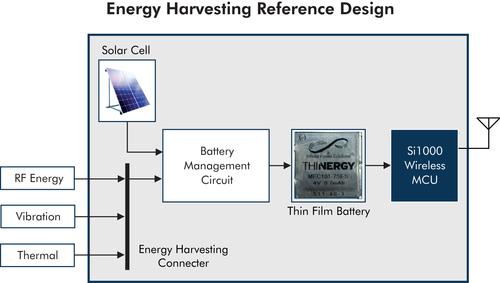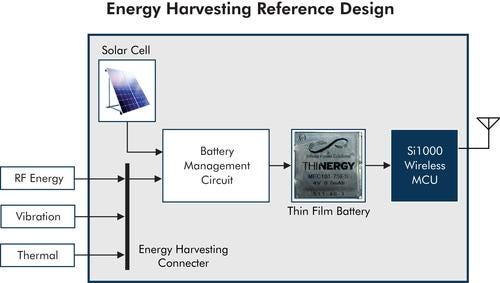Learn How to Add Energy Harvesting to Your IoT Apps
April 24, 2015

If you're developing a product with lots of sensors and no access to the power grid, then you'll want to take note of a Design News Continuing Education Center class, "Designing Low Power Systems Using Battery and Energy Harvesting Energy Sources."
Sponsored by Digi-Key, the course is targeted at engineers who plan to employ microcontrollers (MCUs) and field programmable gate arrays (FPGAs) in conjunction with energy harvesting systems. The course will include a look at such power sources as solar, thermal, and vibration.

Consultant Warren Miller, host of the five-day course, said the class addresses the simultaneous growth of energy harvesting technologies and Internet of Things (IoT) applications. "There's going to be an explosion of applications using energy harvesting as a key element of their systems," Miller told us. He added that the class will address applications in medical, industrial, and automotive, among others.
Designing Low Power Systems Using Battery and Energy Harvesting Energy Sources
Register today!
The online class, which will run May 5-9, will start with an introduction to low-power systems, and then examine batteries, MCUs, FPGAs, and energy-harvesting systems. It will finish with examples of low-power design.
Miller, who brings 30 years of experience in engineering and electronics to the class, said the course is important now because modern energy-harvesting products have become easier for engineers to use. That's a departure from a few years ago, when many engineers steered clear because such systems required them to do too much custom design work. In contrast, he said, new integrated energy-harvesting solutions are geared toward reducing complexity.
"What we want attendees to walk away with is a sense of how much easier it is today," he told us. "The energy is available, the devices are lower power, and it's all much easier to implement."
MORE FROM DESIGN NEWS: Using Energy Harvesting to Power MCUs and FPGAs
Senior technical editor Chuck Murray has been writing about technology for 31 years. He joined Design News in 1987, and has covered electronics, automation, fluid power, and autos.
Design engineers, New England's premier design and manufacturing event, Design & Manufacturing New England, will take place in Boston, May 6-7, 2015. A Design News event, Design & Manufacturing New England is your chance to meet qualified suppliers, get hands-on with the latest technologies, be informed, and expand your network. Learn more here.
About the Author(s)
You May Also Like



